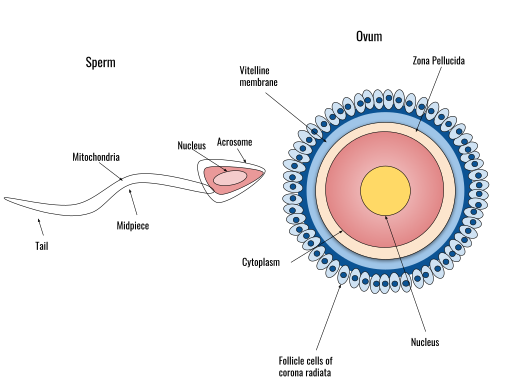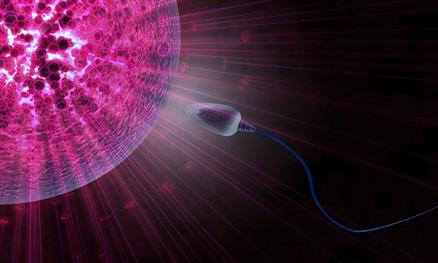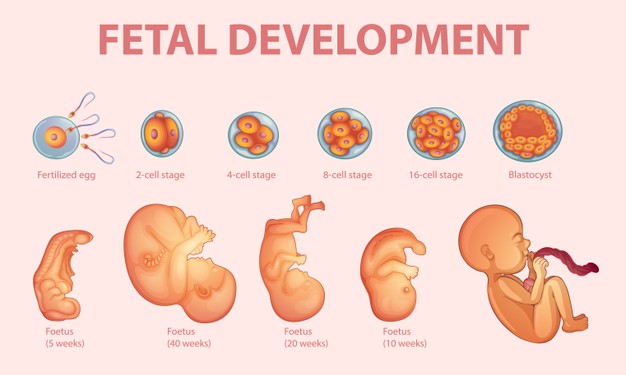PDF chapter test TRY NOW
In the last theory, we saw that humans are an example that reproduce through sexual reproduction. In this theory lets see about the different stages of sexual reproduction. Sexual reproduction can be divided into three stages:
1. Pre-fertilization
2. Fertilization
3. Post-fertilization
Pre-fertilization:
The pre-fertilization stage involves the events of sexual reproduction that occur before the fusion or fertilization of male and female gametes.
1. Gametogenesis or gamete formation
2. Gamete transfer
Gametogenesis:
Gametogenesis is the process of the formation of gametes.
Gametes are haploid cells that are morphologically dissimilar (anisogamous) in humans, i.e., the male and female gametes are dissimilar. In humans, the male gamete is called the sperm, and the female gamete is called the egg or ovum.

Sperm and the egg
Gamete transfer:
The two morphologically distinct gametes must be brought together for fertilization. In humans, the male gamete is motile, while the female gamete is non-motile. A medium is required through which the male gamete progresses to reach the female gamete.
As most male gametes fail to reach the non-motile female gamete, the male gametes are produced in large numbers. They are produced several thousand times than that of the female gamete.
In humans, male and female gametes are present in different individuals, and therefore the organism evolves a special mechanism through which gametes are transferred. The transfer of gametes is vital for the process of fertilization in sexual reproduction.
Fertilization:
Fertilization is the fusion of gametes to form a diploid zygote. The process of fertilization is also referred to as syngamy.

Fertilization
Where does fertilization take place?
Fertilization can occur either in the external medium or internally inside the body of an organism. Thus, there are two types of fertilization, namely:
1. External fertilization
2. Internal fertilization
In humans and higher animals, fertilization occurs internally. The fusion of gametes takes place inside the body of the female. The male gamete is mobile and reaches the egg to fuse with it and form a zygote.
Post-fertilization:
Post-fertilization events are that take place in the sexual reproduction that follow fertilization.
1. Zygote development
2. Embryogenesis
Zygote:
A zygote is diploid and is the fertilization product in sexual reproduction. It serves as a link between one generation and the next generation. In the case of external fertilization, the zygote is formed externally in the medium. In internal fertilization, the zygote is formed inside the female's body.
Embryogenesis:
Embryogenesis is the process of the development of an embryo from the zygote.

Embryo development in humans
During the process of embryogenesis, the zygote undergoes mitosis and cell differentiation. Cell division increases the number of cells in the embryo. Cell differentiation helps in the formation of specialized tissues and organs in an organism.
Based on zygote development, animals are classified into:
- Oviparous (zygote develops outside the organism)
- Viviparous (zygote develops inside the organism)
Humans are viviparous as zygote development occurs in the body of the female.
Reference:
https://commons.wikimedia.org/wiki/File:The_sperm_and_ovum_during_fertilization.svg
https://pixabay.com/illustrations/ovum-sperm-egg-cell-male-female-5818117/
https://www.freepik.com/free-vector/stages-human-embryonic-development_10804975.htm
